Trekking, more than other types of tourism, benefits local communities because it injects money directly into rural areas. Properly handled, trekking can play an important role in poverty alleviation. Guides and porters get jobs, lodges and restaurants along the trails get business.
But trekking and tourism also isolate sections of the poor, benefitting mainly the already privileged segments of society. Often, communities living in and around tourist destinations are still neglected. Then there is also the worrying impact of mass tourism on the environment and culture of trekking destinations.
This is where community-based eco-tourism (CBT) comes in: motivating local people to be proactive in tackling the threats and problems associated with tourism, livelihood and conservation. It also asks how tourism can inspire local people to retain their cultural assets and protect the environment?
A form of community-based eco-tourism is currently being tried out in the Khumbu region where villagers are actively engaged in natural and cultural heritage conservation. The aim is to reduce trekking's ecological and cultural footprint while maximising its benefit for marginalised communities
The Sagarmatha National Park (SNP) is Nepal's most visited national park and is of global cultural and environmental importance. The region saw 3,600 trekkers in 1979 and by 2001 the numbers had soared to nearly 22,000. This means the ecological equilibrium that existed in the park area for centuries is under increasing strain.
Trekking tourism has helped boost the local economy and standard of living with better health care, education and housing. But it has also degraded the region's fragile ecology and cultural traditions. Moreover, the benefits of trekking tourism are not distributed equally throughout the parks as many areas remain culturally and economically isolated.
Trekking tourism has not lead to the preservation of the region's vibrant culture. Economic benefits have taken precedence over the conservation of natural and cultural sacred sites. Many groves, trees, water sources and caves that are regarded as holy are being neglected. The rich oral traditions, rituals, dances, clothes and stories are not properly documented and are suffering erosion.
In 2003, a unique initiative called the 'Sacred Sites Trail to Khumbu' was launched. This community-based tourism initiative tries to integrate multi-thematic conservation needs, diversify tourism benefits and preserve cultural values and stages of development.
At a time when indigenous culture is under increasing threat from encroachment of modern civilisation, loss of livelihood opportunities and Maoist conflict, the hope lies in replicating strategies like the Sacred Sites Trail in other parts of Nepal as well. Already, a 'Sacred Himalayan Landscape' project encompassing national parks and biodiversity regions from Langtang north of Kathmandu to the eastern slopes of Kangchenjunga in Sikkim is being proposed to conserve the cultural, religious and environmental treasures of the eastern Himalaya.
At a 'Sacred Himalayan Landscape in Nepal' conference in April, participants said traditional conservation measures taken to safeguard biodiversity alone are inadequate, the goal should be to also preserve the cultures and traditions that nurture and revere nature.
And once local communities are mobilised to preserve traditional value systems, culture and religion, the environment is automatically protected. After all, only by strengthening society's moorings can society benefit from protecting the environment and from tourism.
Sarah Subba and Ang Rita Sherpa work for The Mountain Institute's Himal Program. www.mountain.org
OFF THE BEATEN TREK
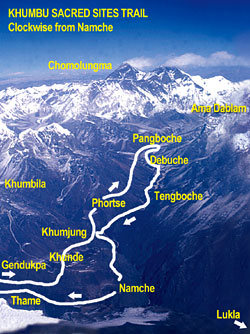 The Sacred Sites Trail is a circular tourism trail created to encourage tourists to visit six lesser known sacred sites and villages in the Khumbu area. Initiated and implemented by the local people with financial support from The Mountain Institute (TMI) the program hopes to reinvigorate and enhance local cultural skills and traditions and distribute tourism benefits more widely by encouraging tourists to visit villages off the established trekking trails and to stay longer.
The Sacred Sites Trail is a circular tourism trail created to encourage tourists to visit six lesser known sacred sites and villages in the Khumbu area. Initiated and implemented by the local people with financial support from The Mountain Institute (TMI) the program hopes to reinvigorate and enhance local cultural skills and traditions and distribute tourism benefits more widely by encouraging tourists to visit villages off the established trekking trails and to stay longer.
The route takes one to Thame, Gendukpa, Phortse, Pangboche and Debuche. The natural assets of these areas are spectacular and less well known. All along the trails, ancient gombas, mani walls, chortens and kanis give travellers a feeling of being in sacred surroundings. giving a spiritual feel to the trail's pristine mountain environment.
The trail passes through 12 monasteries and nunneries, passing clockwise from Namche visiting several sites in the Thame Valley and ending at the Tengboche Monastery. The Sacred Sites Trail feeds into and complements existing trekking routes.
The trail builds on the notion of sustainability that entails maximum consideration to local communities, providing them with livelihood opportunities, involving them in the management and protection of cultural heritage and natural resources.
The confluence of religion, culture and environmental conservation invariably contributes and promotes tourism and development of the area therefore, 'Sacred Sites Trails to Khumbu' builds on the very rich religious and cultural heritage of the region to attract tourists also to isolated areas.
This in turn could help revive traditions such as the belief that springs and lakes and some trees are inhabited by spirits called the Lu-beliefs that were important in conserving water sources, protecting slopes, conserving forests and biodiversity.
PHOTO GALLERY | HEAVENLY TREK
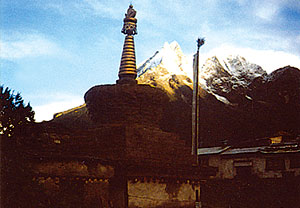
Sunrise from Tengboche.
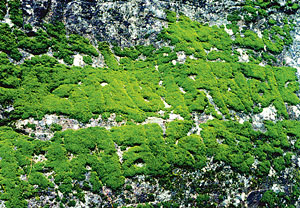
Moss-covered mani wall in the walk up to Khumjung.
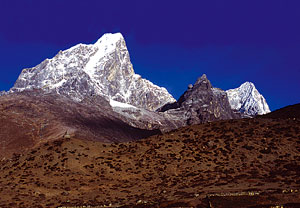
The summit of Taboche seems to peer down at its own valley.
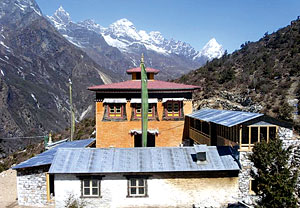
The renovated monastery at Phortse with the mountains of the Gokyo Valley in the background.

Sherpa pilgrims do the sacred walk in Thame.


